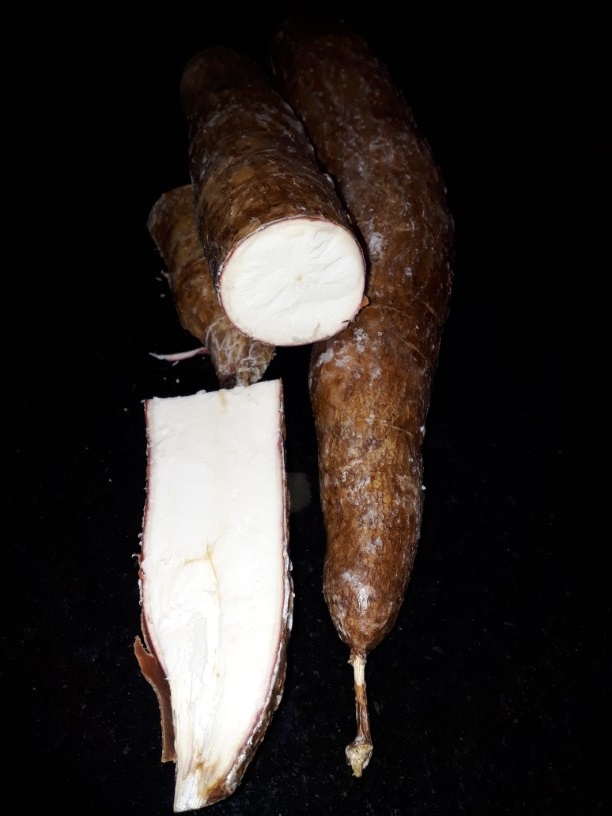Tapioca or Cassava
Manihot esculenta
Spurge family (Euphorbiaceae)
The stories related to this plant are still being edited.
Themes
Cassava was a staple food of pre-Columbian peoples in the Americas and is often portrayed in indigenous art. The Moche people often depicted yuca in their ceramics.
The cassava plant gives the third-highest yield of carbohydrates per cultivated area among crop plants, after sugarcane and sugar beets. Cassava plays a particularly important role in agriculture in developing countries, especially in sub-Saharan Africa, because it does well on poor soils and with low rainfall, and because it is a perennial that can be harvested as required. Its wide harvesting window allows it to act as a famine reserve and is invaluable in managing labor schedules. It offers flexibility to resource-poor farmers because it serves as either a subsistence or a cash crop.
Cassava is extensively cultivated for its edible starchy tuberous root, a major source of carbohydrates. In contrast, cassava leaves are a good source of protein (rich in lysine), but deficient in the amino acid methionine and possibly tryptophan. Alcoholic beverages are made from the tubers.
Wild populations of Manihot esculenta subsp. flabellifolia, shown to be the progenitor of domesticated cassava, are centered in west-central Brazil, where it was likely first domesticated no more than 10,000 years BP. The oldest direct evidence of cassava cultivation comes from a 1,400-year-old Maya site, Joya de Cerén, in El Salvador. Spaniards in their early occupation of Caribbean islands did not want to eat cassava or maize, which they considered insubstantial, dangerous, and not nutritious. Cassava was introduced to Africa by Portuguese traders from Brazil in the 16th century. Maize and cassava are now important staple foods, replacing native African crops. Cassava is sometimes described as the 'bread of the tropics'.
In many countries, significant research has begun to evaluate the use of cassava as an ethanol biofuel feedstock. Cassava tubers and hay are used worldwide as animal feed. Manioc is also used in a number of commercially available laundry products, especially as starch for shirts and other garments.
It must be properly prepared before consumption, as improper preparation of cassava can leave enough residual cyanide to cause acute cyanide intoxication, goiters, and even ataxia, partial paralysis, or death. Brief soaking (four hours) of cassava is not sufficient, but soaking for 18–24 hours can remove up to half the level of cyanide. Drying may not be sufficient, either. The more toxic varieties of cassava are a fall-back resource (a 'food security crop') in times of famine or food insecurity in some places. Farmers often prefer the bitter varieties because they deter pests, animals, and thieves.
Details
| Description: | Shrub, to 3 m. |
|---|---|
| Distributions: | Native to tropical amerika (n. brazil), now grown throughout the tropics. |
| Habitat: | Cultivated or found in waste places of mainly abandoned gardens and along roads. altitude: sea level up to 1700 m. |
| Year cycle: | Perennial (trees and shrubs included) |
| Hardiness: | Heated glasshouse |
| Flowering period: | November - augustus |
| Flower color: | Green, red |
| Notes on flowers: | Lax, with 3–5 together in fascicles; pedicels light green to red. |
| Fruiting period: | November - augustus |
| Fruit color: | Green |
| Notes on fruits: | Fruit green to light yellow, white, dark brown, rather smooth, with 6 longitudinal wings. |
| At its best: | November - augustus |

